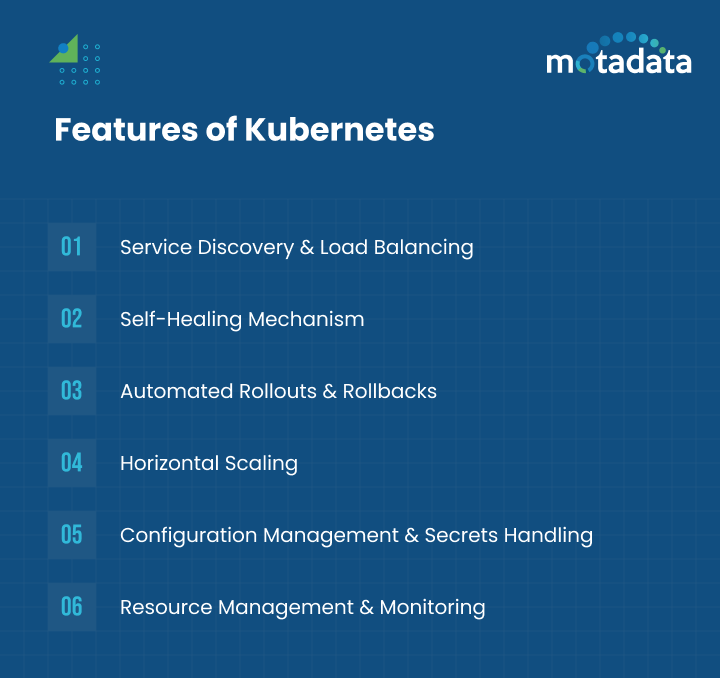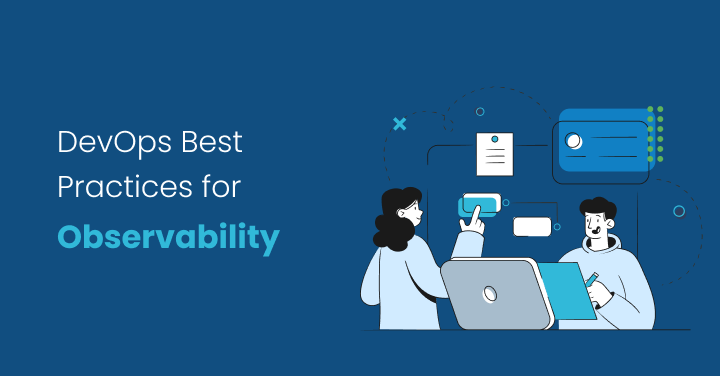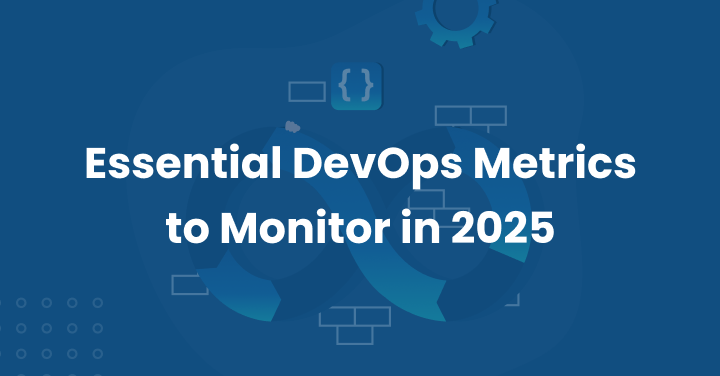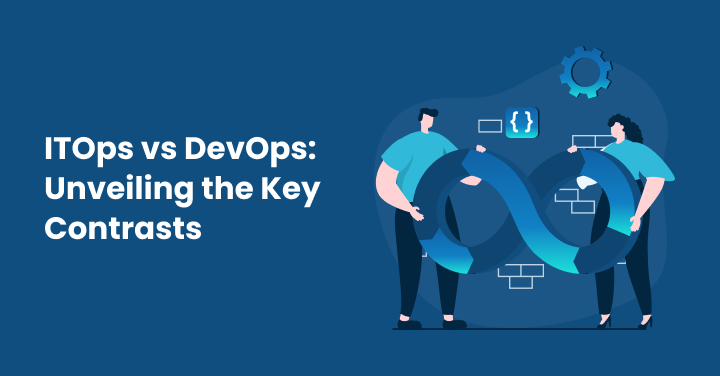Introduction
The evolution of DevOps has brought about a shift in how software development is done. Since Kubernetes is an open-source platform, it has become quintessential in automating and or scaling these practices.
A Kubernetes cluster is a group of nodes that physically execute container applications.
It supports the mobility of applications so that they can be run on-premises or in any cloud service provider of one’s choosing.
In this blog post, the author reviews the typical problems that most organizations experience as they try to scale DevOps with Kubernetes.
It also presents advice on how to navigate these hurdles.
Understanding the Challenges
As effective as applying Kubernetes for scaling DevOps is, it comes with several specific concerns.
It’s essential to know these challenges all the same. This will assist you in using the forum appropriately and facilitate the transition to a solid and flexible DevOps process.
We are constantly innovating to improve the solutions that enable businesses to adapt to the continually changing market.
Asking clients to move from old, single-large systems to innovative microservices has proven challenging regarding thinking and skills.
Someone will have to take control of the application’s parts, control which part is active at a given time, ensure the interaction between the services and maintain the integrity of the whole system.
Complexity
This creates a system that may become complicated to manage when it expands in nature, thanks to Kubernetes.
The control plane is responsible for the cluster, comprising the following.
Several sub-parts make the control plane Upa under control plane work.
Knowing how these parts operate to secure your applications’ health and adaptability is good.
Containerization introduces a new approach to resource handling, as it hails from the concept of virtual machines.
This means that teams can only work with modern instruments and methods.
This means those individuals must know more about managing container images, resource management, and container lifecycles.
Managing this is not a trivial task; it requires a good understanding of Kubernetes, proper coordination, and the right tools to make it look more manageable.
However, these difficulties can be significantly minimized by embracing the infrastructure-as-code approach and getting to set automation.
Resource Management
Cloud computing and Kubernetes’ main advantage is adjusting and adding new resources quickly, including VMs.
However, if not properly managed, resources will result in high costs or poor work performance.
You have to understand what application requires to increase resource utilization efficiency.
You should also adjust the requests about the resources used by your containers and the proper setting of what is called limits.
Kubernetes, for instance, has features like Resource Quotas and Limit Ranges.
These tools assist in setting policies regarding the amount of resources consumed by these applications.
In this manner, one application cannot monopolize many resources, which could negatively impact other applications in a cluster.
Over time, it is possible to learn that something is slowing down and how resource use can be optimized.
Most tools, like Prometheus, have been developed for the Kubernetes environment, so they are easy to integrate with this environment.
They provide good details on how resources are consumed and intelligence on setting resources and scaling in your cluster.
Configuration Management
With the growth of your Kubernetes cluster, dealing with configuration files will become cumbersome.
Therefore, it is important to have a firm plan for managing these configurations.
This plan also assists in maintaining order and uniformity, as well as the ability to replicate issues in various settings, not only in development.
One should use a version control system such as Git to store configuration files in a single place and repository.
This enables you to review changes and make contributions effortlessly.
This applies to the best practices in infrastructure as code, where you can use your configuration changes the same way and, if needed, roll back the changes.
Various tools like Helm can help manage configurations a little more easily.
Helm is a tool that enables you to work with Kubernetes applications regarding packaging, sharing, and handling them.
Using Helm, one can create configuration templates.
This allows you to set applications with different configurations in different environments.
Utilizing Monitoring and Observability
Observing the status of your cluster and the applications running within it is mandatory so that you can detect problems before they worsen.
Holistic solutions for monitoring and observability offer details of deployment performance and general Kubernetes health conditions.
Prometheus is an open-source monitoring system that works well with Kubernetes and enables the caller to gather metrics from the applications and infrastructure of the cluster.
Grafana, another powerful tool, can be integrated with Prometheus to produce fancy dashboards that help visualize important metrics.
| Monitoring Area | Key Metrics |
|---|---|
| Cluster Health | CPU utilization, Memory usage, Node status |
| Application Health | Request latency, Error rates, Throughput |
| Resource Utilization | Pod resource consumption |
In addition, defining the alert by the critical metrics enables one to address the possible problems before they occur.
Setting up flags for high CPU utilization, low memory, or other uncharacteristic application operations allows you to deal with issues as soon as they happen, reducing the time your website is offline.
Implementing a CI/CD Pipeline
CI stands for continuous integration, and CD stands for continuous delivery.
These are two primary practices familiar with DevOps. CI/CD enhances the speed of building, testing, and releasing applications, making application development faster with frequent releases.
As to the integration with AKS, it needs to be established that to connect the CI/CD pipeline, and it must be configured to generate container images and push them to the container registry.
Next, update the deployment configuration using the new image to redeploy your application in the Kubernetes cluster.
Applications like Jenkins, GitLab CI/CD, and CircleCI best suit Kubernetes deployment.
Moreover, the usage of canary/’blue-green’ deployments cuts dangers in delivering new code, namely rollouts.
These methods allow you to gradually roll out the change to a beginning with some selected users.
You can try it and see how it goes, then deploy it fully or conduct a rollback if anything goes wrong.
Also Read: Top 9 CI/CD Best Practices for your DevOps Team’s Success
Optimizing Performance
Optimizing your Kubernetes cluster and apps requires effort and a series of procedures.
It’s essential to assess your cluster’s functionality periodically.
This aids in problem identification and necessary modification.
Resolving issues and making modifications improves your applications’ functionality and user experience.
Critical capabilities provided by Kubernetes include readiness, liveness probes, and resource restrictions.
These technologies can strengthen and accelerate your system.
They also make your Kubernetes environment more dependable and efficient by assisting you with resource management, health checks, and application life cycle management.
Performance Tuning
Optimizing performance requires constant practice and a methodical approach.
First, identify the parts of your clusters or apps that are causing lag.
You can find areas that need improvement by using tools like Prometheus and Grafana, which can provide useful metrics.
After identifying the bottlenecks, take advantage of best practices for performance tweaking.
These can include optimizing the application’s code, configuring containers’ resource requests and limitations appropriately, and adjusting the number of replicas to handle load more effectively.
You can make these adjustments with Kubernetes without having to halt your apps.
Remember that every application has a unique environment.
Performance tweaking, therefore, lacks a single solution. Diligent observation, research, and testing are required to acquire the ideal arrangement for your purposes.
Horizontal and Vertical Scaling
Scaling in Kubernetes can happen in two ways.
You can scale horizontally by adding or removing nodes from the cluster or vertically by changing the resources for each pod.
Kubernetes has tools for both methods, which lets you change your applications as needed.
Horizontal scaling, or scaling out, is helpful in a microservices setup that often utilizes an application programming interface (API).
In this case, different services can scale by themselves based on their needs.
You can automatically change the number of pod replicas using Kubernetes’ Horizontal Pod Autoscaler (HPA).
This is done based on CPU use, memory use, or other metrics you set.
HPA helps your applications get enough resources to handle traffic spikes. It can also save money by reducing resources when the demand goes down.
Vertical scaling, or scaling up, means increasing a pod’s CPU and memory.
While this can boost performance for apps needing more resources, you must ensure the nodes can support these requests.
Features of Kubernetes
1. Service Discovery and Load Balancing
Kubernetes has many good service discovery capabilities that enable applications within that cluster to discover themselves and interact with one another well.
From the perspective of network topologies and configuration, service discovery transforms network configurations by automatically updating service IP addresses as well as DNS names as applications, in addition to services, are altered.
Load balancing is included to divide the incoming traffic by different instances of a certain service to guarantee high availability and reliability.
2. Self-Healing Mechanism
From pre-established health tests, Kubernetes self-automatically recycles and reschedules any containers that fail, crash or fail to respond.
In case of problems, one can easily roll back to a previous running state and because of that then maintain and troubleshoot becomes easier.
3. Automated Rollouts and Rollbacks
Kubernetes allows developers to define how an application should change over time who and, in what order updates are rolled out on strategy and number of replicas.
Automated rollouts are all about having applications updated without disruption; new app versions are released gradually to check for stability.
4. Horizontal Scaling
From the horizontal scaling perspective, Kubernetes offers the ability to adapt the number of replicated containers through the given resource consumption patterns.
Another autoscaling method includes usage of the Horizontal Pod Autoscaler to scale some or all applications based on CPU usage or metric of your choice.
5. Configuration Management and Secrets Handling
With Kubernetes, configuration and secrets are not placed inside the application which enforces the concept of code and configuration separation.
Some of the configurations can be applied to the application without a need to build or even redeploy the application which makes the configuration management more effective.
6. Resource Management and Monitoring
Kubernetes dollars resource satisfaction by controlling CPU, memory and blocks of storage for containers, guaranteeing the resource required by each container.
For instrumentation, which is gaining popularity in the development of monitoring tools, several extra solutions can be used, including Prometheus and Grafana.
Case Studies of Kubernetes Adoption
1. Spotify: Enhancing Scalability and Deployment Efficiency
Challenge: Having millions of users that consume music worldwide, Spotify faced challenges with an efficient and optimal global architecture.
Solution: Implementing the use of micro-services, Spotify was able to deploy its services, scale them and manage them individually due to the use of Kubernetes cluster.
Outcome: This led to faster deployment cycles, increased service availability, or as they put it, simplicity of working with microservices to optimize user experience… and operations.
2. Airbnb: Seamless Application Management
Challenge: Airbnb required a strategy to deploy new features and features updates within a very short time to the clients without stale imposition on the appearance and feel of the platform.
Solution: By having its applications run on Kubernetes, Airbnb could essentially unbind service constituents and better orchestrate its microservice architecture.
Outcome: Kubernetes helped Airbnb bring about a continuous delivery process, shortening the time taken for product releases and making sure their customers receive a good experience regardless of platform.
3. Pinterest: Increased Development Speed and Efficiency
Challenge: Pinterest had to address multiple users at once and enable fast updates of the platform.
Solution: Pinterest leveraged kitchen to develop a robust platform for creating infrastructure where teams can make deployment independently with little doubt of a central operations team.
Outcome: This allowed the development teams to release new features on their own, which proved to enhance the overall development rate together with the operation.
4. Financial Institutions: Improved Data Security and Compliance
Challenge: Because the data belongs to customers, financial institutions come under higher regulatory and security demands for processing the information.
Solution: Role solutions and policy engagements were deployed from Kubernetes for access control and compliance.
Outcome: This made it possible for the financial institutions to preserve an environment of security for the administrative and deployment of the application and conformed with the standard measures.
By leveraging these features and use cases, businesses can achieve increased efficiency, scalability, and reliability in their applications, making Kubernetes an essential tool for modern application development and operations.
Highlight the strategies they employed and the benefits they achieved
Docker and Helm are examples of DevOps tools we employed with Kubernetes to enhance our deployment processes. Our CI/CD workflows were automated, which made us more scalable and agile.
We guaranteed high availability by utilizing Kubernetes clusters on AWS and GCP.
Our software deployment went more smoothly thanks to configuration management and service discovery.
Among the advantages are better runtime metrics, increased workload visibility, more consistent deployments, and adherence to DevOps best practices.
To improve efficiency, we also used Infrastructure as Code (IaC).
We enhanced user experience and streamlined software delivery by utilizing Kubernetes.
Conclusion
In conclusion, using Kubernetes for DevOps has its challenges.
These include dealing with complexity and managing resources.
However, you can improve performance by tuning it and using Kubernetes features well.
Setting up a CI/CD pipeline and monitoring everything correctly are essential to success.
By recognizing and tackling these points, organizations can fully benefit from Kubernetes.
This can lead to better efficiency and agility in the way they develop.
The case studies are great examples of practical strategies that provide real benefits.
These lessons can improve performance and make operations smoother in the DevOps space.
FAQs:
Kubernetes automates deployment, scaling, and management of containerized applications, aligning with DevOps practices to streamline software delivery.
Teams often face challenges such as steep learning curves, complex cluster management, security risks, and monitoring issues.
Kubernetes enhances CI/CD by enabling continuous deployment, rolling updates, and automated scaling, making it easier to release updates frequently.
Kubernetes supports rolling updates and rollback mechanisms, ensuring minimal or no downtime during deployments and quick recovery from failures.







